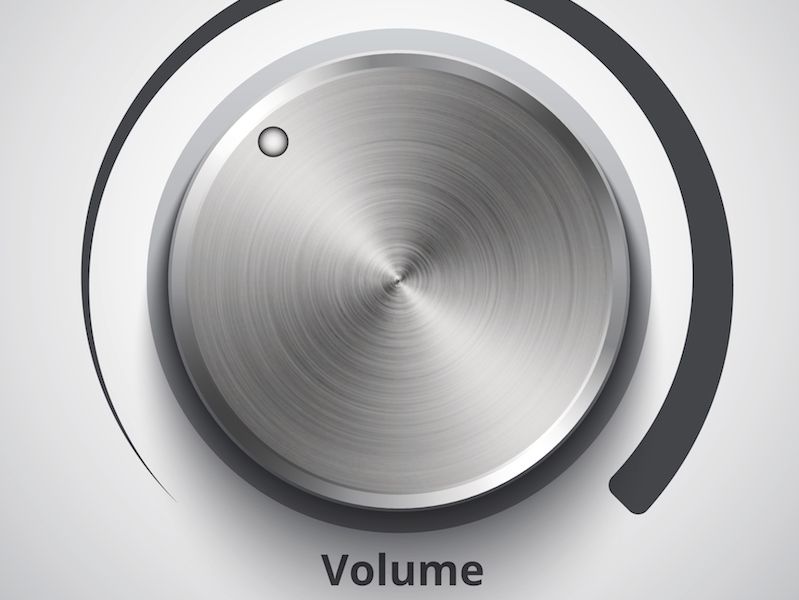
Have you ever noticed the “Beware of Sharks” sign when you’re at the ocean? It’s not hard to understand that you shouldn’t ignore a caution like that. A sign like that (particularly if written in large, red letters) might even make you reconsider your swim altogether. But people don’t tend to pay attention to warnings about their hearing in the same way for some reason.
Current studies have found that millions of people disregard warning signs when it comes to their hearing (these studies exclusively looked at populations in the United Kingdom, but there’s no doubt the problem is more global than that). Part of the problem is awareness. It’s pretty intuitive to be scared of sharks. But most individuals don’t have an overt fear of loud sounds. And how do you know how loud is too loud?
Loud And Hazardous Sound is Everywhere Around us
Your ears are not just in peril at a live concert or on the floor of a machine shop (not to minimize the hearing hazards of these situations). Many every-day sounds are potentially hazardous. That’s because it isn’t exclusively the volume of a sound that presents a danger; it’s also how long you’re exposed. Even low-level sounds, like dense city traffic, can be damaging to your hearing when experienced for more than a couple of hours.
Broadly speaking, here’s an approximate outline of when loud becomes too loud:
- 30 dB: Normal conversation would be at this volume level. You should be perfectly fine at this level for an indefinite period.
- 80 – 85 dB: An air conditioner, heavy traffic, and a lawnmower are at this volume. This volume will usually become damaging after two hours of exposure.
- 90 – 95 dB: Think of how loud a motorcycle is. 50 minutes is enough to be dangerous at this volume.
- 100 dB: This is the amount of sound you might encounter at a mid-size sporting event or an approaching subway train (depending on the city, of course). This volume can become dangerous after 15 minutes of exposure.
- 110 dB: Have you ever turned your Spotify music up to max volume? That’s normally around this volume on most smartphones. This amount of exposure will become dangerous after only 5 minutes of exposure.
- 120 dB and over: Any sound over 120 dB (think loud rock concerts or exceptionally large sporting events) can result in immediate injury and pain in your ears.
What Does 85 dB Sound Like?
Generally speaking, you’re hearing is in danger when you’re experiencing any sound 85 dB or higher. But it can be hard to distinguish how loud 85 dB is and that’s the problem. A shark is a tangible thing but sound is not so tangible.
And that’s one of the reasons why hearing warnings frequently go ignored, when the sound environment isn’t loud enough to cause pain, this is especially true. There are a couple of possible solutions to this:
- Adequate training and signage: This is true of workspaces, in particular. The real hazards of hearing loss can be reinforced by training and sufficient signage (and the advantages of protecting your hearing). Signage could also inform you just how noisy your workspace is. Training can help employees know when hearing protection is required or recommended.
- Download an app: There isn’t an app that’s going to immediately safeguard your ears. But there are several free apps that can work as sound level monitors. It’s difficult to determine what 85 dB feels like so your ears can be injured without you even knowing it. Making use of this app to keep track of sound levels, then, is the solution. This will help you develop a sense for when you’re going into the “danger zone” (Or, the app will simply let you know when things get too loud).
If You’re in Doubt, Protect Yourself
No app and no signage will ever be 100%. So take the time to safeguard your hearing if you have any doubt. Over a long enough duration, noise damage will almost certainly create hearing problems. And nowadays, it’s never been easier to harm your ears (it’s a simple matter of listening to your music too loudly).
You shouldn’t raise the volume past half way, especially if you’re listening all day. You need noise cancellation headphones if you are always cranking up the volume to block out background noise.
That’s why it’s more essential than ever to acknowledge when the volume becomes too loud. And to do this, you need to raise your own awareness and knowledge level. It’s not hard to reduce your exposure or at least use ear protection. But you have to recognize when to do it.
That should be easier these days, too. That’s even more true now that you have some insight.
Think you might have hearing loss? Make an appointment.